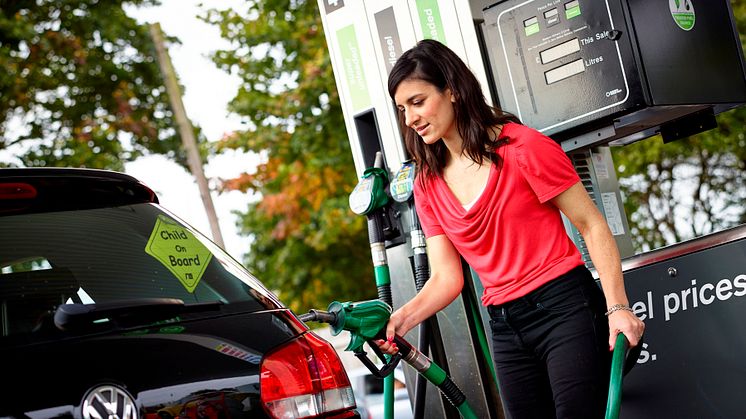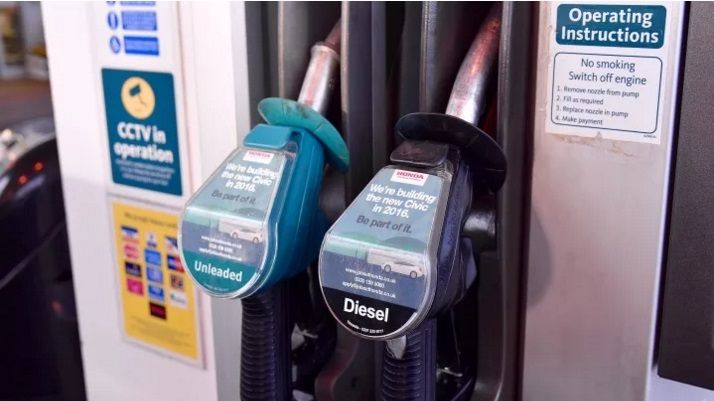
Press release -
Price of petrol goes up by more than 1p a litre in April but cut imminent
Pump prices rose by more than a penny a litre in April, but a drop in the price of oil in the second half of the month and a jump in the value of the pound means retailers are now in a position to pass on a cut to motorists imminently.
RAC Fuel Watch data for April shows the UK average price of unleaded went up 1.44p a litre to 118.85p and the average diesel price by 1.17p to 120.53p. However, a fall in the barrel price from a mid-month high of $55 to a low of $49.41 on Thursday 27 April meant the wholesale price of petrol ended April 3.5p lower than it started. The wholesale price of diesel finished the month 2.5p cheaper.
RAC fuel spokesman Simon Williams said: “April wasn’t a good month for fuel prices but motorists have every right to expect an early May petrol and diesel cut from retailers of 2p a litre at the very least.
“The combination of a lower oil price and a 4% rise in the value of the pound has made it far cheaper for retailers to buy in their fuel. In the interest of transparency this saving should be passed on to motorists on the forecourt in the next few days.
“We have seen one supermarket reduce their petrol price by half a pence a litre and a very slight reduction in the national average but there is far more to come if retailers are not to be accused of ‘rocket and feather’ pricing.
“The majority of retailers buy their fuel on a weekly lagged basis so by today (Thursday 4 May) they will have had plenty of time to do the right thing and drop their prices.”
Currently, it costs a motorist driving a 55-litre petrol car £65.37 to fill up – a 79p rise in April. The diesel equivalent is £66.29 – an increase of 64p from the beginning of the month.
At the end of April the average price of a litre of supermarket unleaded was 115.72p – up 1.39p from 114.33p; and diesel 117.56p a litre, up 1.47p from 116.09p. The supermarkets are typically keener on pricing, often 2-3p cheaper than the UK average, and they usually lead price-cutting activity.
Simon Williams added: “Accurately predicting what is going to happen with fuel prices in the next month is as difficult as long range weather forecasting. That said, we know a cut is overdue and beyond that it is widely reported that there is still a glut of oil despite the Organization of the Petroleum Exporting Countries and some non-OPEC partners deciding to reduce their output. The continued oversupply of oil is due to the United States taking advantage of higher oil prices to bring more fracking rigs online, thereby upping its oil contribution. The number of oil rigs in the US has risen for 15 straight weeks to nearly 700.
“OPEC is due to meet in Vienna on 25 May so it will be interesting to see if they decide to maintain the same level of cuts, go further still or even begin to overproduce again to lower the oil price in a bid to slow down the United States’ fracking activity. The feeling among many analysts is that the OPEC and non-OPEC deal will remain in place.
“From the UK motorist’s perspective we need oil to remain in oversupply and the pound to stay the same or get stronger against the dollar to avoid fuel prices creeping up in the coming weeks and months.”
Regional fuel price variation
The North East saw the largest jump in the price of petrol at 1.85p a litre to 118.07p and Wales had the lowest increase at just over a penny (118.01p). The South East once again had the highest average price for petrol at 119.49p a litre.
Scotland suffered the biggest rise in unleaded at 1.67p a litre, taking the average price to 120.40p a litre. Northern Ireland had the cheapest diesel in the UK in April, finishing the month at 119.37p a litre whereas the South East had the most expensive at 121.25p.
Regional average unleaded pump prices
| Unleaded | 02/04/2017 | 27/04/2017 | Change |
| North East | 116.22 | 118.07 | 1.85 |
| Scotland | 116.42 | 118.24 | 1.82 |
| Northern Ireland | 116.49 | 118.17 | 1.68 |
| East Midlands | 117.15 | 118.73 | 1.58 |
| North West | 117.28 | 118.86 | 1.58 |
| Yorkshire And The Humber | 116.90 | 118.48 | 1.58 |
| West Midlands | 117.59 | 119.16 | 1.57 |
| South West | 117.51 | 118.96 | 1.45 |
| East | 117.65 | 119.01 | 1.36 |
| South East | 118.24 | 119.49 | 1.25 |
| London | 117.95 | 119.17 | 1.22 |
| Wales | 116.92 | 118.01 | 1.09 |
| Diesel | 02/04/2017 | 27/04/2017 | Change |
| Scotland | 118.73 | 120.40 | 1.67 |
| South West | 119.31 | 120.64 | 1.33 |
| East Midlands | 119.13 | 120.39 | 1.26 |
| Yorkshire And The Humber | 118.83 | 120.01 | 1.18 |
| North East | 118.43 | 119.61 | 1.18 |
| East | 119.90 | 121.05 | 1.15 |
| West Midlands | 119.50 | 120.63 | 1.13 |
| North West | 119.30 | 120.35 | 1.05 |
| Wales | 118.90 | 119.94 | 1.04 |
| South East | 120.23 | 121.25 | 1.02 |
| London | 119.93 | 120.93 | 1.00 |
| Northern Ireland | 118.37 | 119.37 | 1.00 |
Green – cheapest/least; red – most expensive/most
Motorists can keep abreast of the latest fuel prices by visiting: rac.co.uk/fuelwatch or following #racfuelwatch on Twitter.
Ends


